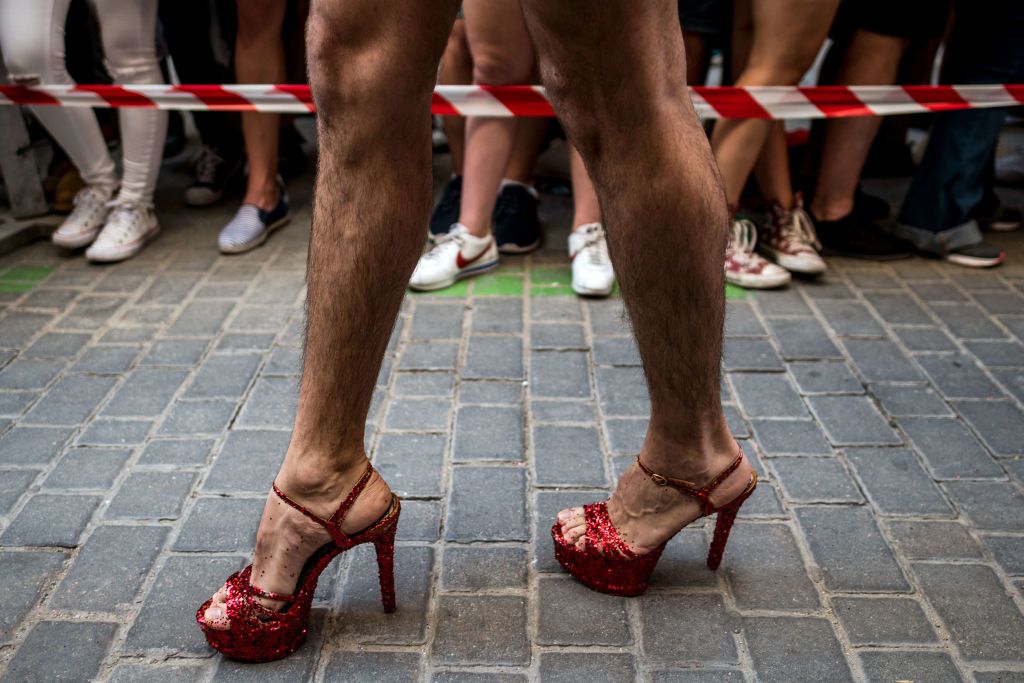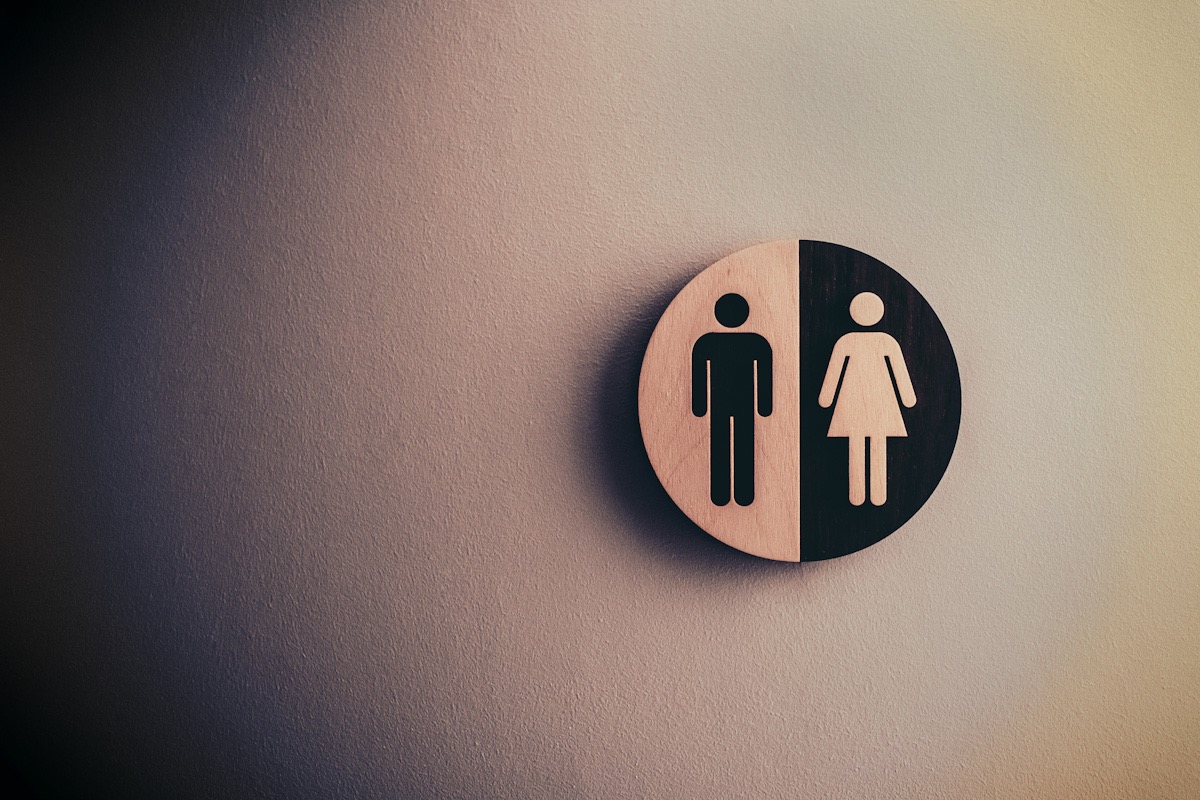Science / Tech
The Truth about Autogynephilia
Sexual tastes you do not share are inevitably hard to comprehend. But autogynephilia is especially so, since it is rare and even more rarely spoken of.

It was an “aha” moment, says Ray Blanchard. In the mid-1980s, the clinical psychologist was working at the Clarke Institute of Psychiatry in Toronto, trying to work out what motivated gender-dysphoric men who wanted cross-sex hormones and surgery. And now he had met “Philip,” a patient whose case history made him feel that suddenly everything was clear.
Understanding Blanchard’s moment of revelation requires a closer look at earlier clinicians’ observations. For all the sanitised accounts in newspapers and memoirs, they had always understood that cross-sex identification had a great deal to do with sexual desire, and played out differently according to sexual orientation. “There was never a question throughout the twentieth century whether there are different types of transsexuals,” says Blanchard. “The question was how best to classify them.”
Blanchard started with two broad groupings: androphilic males and the rest. The first group were the minority—former “sissy boys” who had persisted in wanting to be girls, highly feminine in their presentation and interests. The rest were quite different, and more varied. Many had wives and children, and conventionally masculine jobs and pastimes. Some reported fantasising during sex that they were women and their female partners were men penetrating them, or that they and their wives were lesbians. Yet others described themselves as bisexual or asexual—lacking in any sexual desire. It was not easy for an observer to see why they might seek to be accepted socially as women, or what they meant when they said they felt like “women inside.”
The sole cross-sex behaviour that many reported, erotic transvestism, is a common fetish of heterosexual men. A study in Sweden in 2005 found that 2.8 percent of males experienced sexual arousal in response to cross-dressing. For some, it is sufficiently intense and central to their sexual arousal to constitute a “paraphilia”—an atypical, extreme sexual interest that may be classed as a disorder if it causes serious problems or distress. But male cross-dressers do not usually express cross-sex identification. “I was looking for the bridge,” says Blanchard, “between wearing women’s clothing as a masturbatory aid and wanting to be a woman.”
And then he met “Philip.” A 38-year-old with an MBA, Philip suffered gender dysphoria severe enough to have caused episodes of depression. He recalled throwing a penny into a wishing-well when he was six and praying to be turned into a girl. His sexual experiences had been with women, and during them he imagined being a woman too. When he masturbated, he imagined his naked body as a woman’s, focusing on the breasts, vagina, and soft skin. Sometimes he imagined a man was penetrating the vagina.
Philip said he had cross-dressed once in childhood but never since, because he got nothing from it. His readiness to describe his cross-sex fantasies made it unlikely that he was concealing a history of erotic cross-dressing. And hence Blanchard’s “aha” moment: “Here you had what, up till that point, had been called transvestism, and there were no clothes.” Women’s attire was not the true object of such a man’s affections, he concluded: rather, the clothes were the means whereby a man gave life to that object, namely himself in female form. Blanchard turned to Greek to name this sexual desire: “autogynephilia,” which means love of oneself as a woman.
Understanding the life histories and motivations of these newly identified “autogynephiles” posed several thorny problems. Since they had shown no signs of gender dysphoria or cross-sex identification as children, a prospective study, such as that carried out by Richard Green, was not an option. Complicating matters, by this point gender doctors had realised that their patients were intentionally deceiving them. An informal network had developed, with post-operative transsexuals coaching pre-operative ones in what to say to get approved for surgery: that your earliest memory was of knowing that you were truly a girl, and that you had been certain of that inner truth ever since.
Patients also lied about their sexual desires and experiences. Doctors at many clinics (though not the Clarke) regarded androphilic men as the only suitable candidates for surgery: in a homophobic world, turning gay men into straight (trans) women seemed to make sense. A patient who was sexually interested in women might therefore not admit it. On the other hand, one who seemed too interested in men risked being written off as a confused gay man. This double-bind might lead some to deny interest in sex altogether. Another reason this might happen is that men who wish they had a woman’s body commonly find their male genitalia disgusting, and may become adept at screening out awareness of the physical signs of arousal.
To get at the truth about autogynephilia despite these obstacles, Blanchard used two techniques. One was phallometry, in which a pressure gauge is used to measure tumescence. Patients listened to stories about presenting as a woman—very dull ones, so as not to excite anyone who did not have an erotic interest in cross-dressing. (Here is a sample: “You put on your eye shadow, mascara, and lipstick.”) Most of the men in Blanchard’s second group who had denied an erotic interest in cross-dressing became aroused. The other was a questionnaire developed for gauging motivation to provide socially acceptable answers. The patients who denied erotic cross-dressing, or who claimed to be bisexual or asexual, scored more highly, suggesting that they were more likely to be saying what they thought doctors wanted to hear.

All in all, Blanchard saw no reason to change his initial broad-brush division between androphilic transsexuals and the rest. The self-described bisexuals in the second group, he concluded, were autogynephiles who were attracted to women, but also desired men to validate their female identities. Those who described themselves as asexual were concealing their desires, perhaps even from themselves. He later drew finer distinctions within the group of autogynephiles, according to the nature of the fantasies. If these centred on clothing, the man was more likely to be content without medical transition. If they centred on the body, especially on imagined female genitalia, he was more likely to be severely dysphoric, and less likely to be able to find peace without surgery.
None of Blanchard’s work was intended to put obstacles in the way of transition. He wanted to understand the clinic’s patients, and help them decide what to do. Many were conflicted: concerned for their wives and children, and perhaps their careers. Moreover, autogynephilic desire seemed to compete with ordinary heterosexual desire, and could be temporarily eclipsed by a new partner. A man who had started fantasising about being a woman during adolescence might fall in love, conclude that those fantasies were a phase and marry—only for them to return years later. If the significance of persistent fantasies of having female genitalia was more widely known, fewer people would be made miserable by marriages entered in good faith that ended in misery when the husband transitioned.
In the 1980s and 1990s, when Blanchard was doing his research, the number of patients seen by gender clinics was tiny. The sole treatment pathway was physical transition: oestrogen and vaginoplasty for male patients; testosterone and mastectomy, and perhaps phalloplasty (a risky and complex operation in which flesh stripped from an arm or thigh is crafted into a neo-phallus), for female ones. Long delays were common. When patients were eventually seen, the personal crises that led to referral were past. And central to assessment was ensuring that they fully understood the goal of castration and bodily remodelling. They had to confront a tough question: was their desire to transition strong enough?
It made for strict gatekeeping. At the Clarke, four-fifths of patients abandoned the idea of transition before surgery. Some did not show up for the initial assessment. Others never returned, perhaps having concluded that living with gender dysphoria was preferable to proceeding. Even after that, referral for surgery depended on the “real-life test”: changing name, pronouns and clothing, and maintaining a cross-sex presentation for two years. A surprising number presented for follow-up appointments yearly, but never embarked on this trial. Clinicians could be confident that patients who stayed the course were unlikely to experience regret. And indeed, research at the Clarke—and other clinics with similar rules—found that hardly any did, and most were happier post-surgery.
The clinic would write to employers, asking for sympathy and flexibility during the real-life test regarding such questions as which workplace facilities patients would use. Post-surgery, the thinking went, they would use those intended for their adopted sex. Superficially, their bodies were now similar, and as for any risk of sexual violence from admitting males to female spaces, those males’ sexual organs had, after all, been removed.
Such decisions were made ad hoc by clinicians, perhaps without thinking through all possible situations and certainly without consulting women about what some would have seen as unwarranted intrusion. But the main considerations were how rare post-operative transsexuals were—and that there was no suggestion that pre-operative transsexuals would have the right to expose themselves in women’s spaces, as later campaigners would demand. “These anomalies were not the cause for great soul-searching,” says Blanchard. “It wasn’t necessary to square them with every philosophical and ethical consideration everywhere. And thinking back on the patients that we approved for surgery, I don’t think they would have wanted to go into a women’s shower and show themselves as having a penis.”
Blanchard was writing in specialist journals for an audience of a few hundred sexologists. But his typology of transsexualism was not destined to moulder in academic archives. In the 1990s and 2000s it found two popular chroniclers. And what happened next was an early warning of the rise of gender-identity ideology, within which “transgender” is a political identity understood as entirely separate from sexuality, and the very mention of autogynephilia is taboo.
The first of those popularisers was Anne Lawrence, a transwoman who came across Blanchard’s work in 1994, aged 44 and about to embark on transition. A medical doctor, she read everything she could find about transsexuality, but little resonated with her feelings and experiences. In the description of autogynephilia, however, she experienced the shock of recognition. “If you had asked, ‘are you a woman inside?’ I would have replied, ‘I don’t think so,’” she says. “What I always knew is that I wanted to have a woman’s body. I hated the penis; I hated the erections; that’s what I had to change.”
Lawrence had wanted to transition since at least her teens. She recalls sitting in a university dorm with a utility knife, contemplating self-castration. But she held back from transition because she thought she would not make a sufficiently convincing woman. In her early 40s, however, she started seeing Marsha Botzer, a transwoman practising as a gender therapist in Seattle, who assured her that she would pass very well. If anything, the idea of autogynephilia was “delegitimising in the eyes of the gatekeepers,” she says. Moreover, Blanchard’s theory made her see what she was embarking on in a more complex light—though ultimately she decided to go ahead anyway. “It made me realise what an audacious thing it was to do—to rebuild your life around your paraphilia with consciousness and deliberation.”
In 1998 Lawrence published an essay about autogynephilia on her website, entitled “Men Trapped in Men’s Bodies” as a riposte to the trope that transsexuals are women trapped in men’s bodies. She then solicited anonymous, first-person accounts from other autogynephiles, and in 2011 published an analysis of several hundred in a book of the same name.
Sexual tastes you do not share are inevitably hard to comprehend. But autogynephilia is especially so, since it is rare and even more rarely spoken of. Lawrence reveals a secret world. She talks about the “pain, frustration and incomprehension” autogynephiles feel about not having the bodies they want. Many of their fantasies are clearly sexual, even if unusual—for example, imagining being penetrated in a non-existent vagina while placing something in one’s anus. But almost anything coded female or feminine, she writes, can cause an “intense, perplexing, shame-inducing erotic arousal that seems to simultaneously animate and discredit [autogynephiles’] desires to have female bodies.” Her informants recount erotic fantasies of pushing a baby buggy, joining a knitting circle, being called “ma’am,” having bubble-gum-blowing contests with girls, wearing clip-on earrings, taking birth-control pills, having a Pap smear test, and so on and on.
Lawrence considers the mechanism whereby this inwardly directed desire brings a cross-sex identity into being. She draws an analogy with the way the average heterosexual man not only wants sex with women, but has romantic feelings for his beloved and bonds with her. Autogynephiles, she thinks, do not merely desire their inner woman: they are “men who love women and want to become what they love.” Cross-dressing often loses its intense sexual charge over time, and becomes comfortable and relaxing, just as a happily married man becomes less sexually excited by his wife, but becomes ever more deeply attached to her.
Those who reject Blanchard’s theories think he, and by extension Lawrence, fundamentally misunderstand the nature and meaning of autogynephilic fantasies. They argue either that the fantasies are perfectly natural because all women feel sexual about their femaleness, in which case autogynephilia is actually evidence that a male person is really a woman; or, alternatively, that those fantasies are mechanisms for coping with being born in the wrong body, in which case surgery will end them. Could those critics be right?
It is true that a woman may feel aroused when contemplating her body or clothing—for example when putting on lacy underwear or a low-cut dress. Autogynephiles’ fantasies are of a different nature. The way they symbolise themselves as women in their imaginations has a “fetishistic flavour” that is “qualitatively different from any superficially similar ideation in natal females,” Blanchard writes. For example, they report arousal at the simple act of putting on everyday women’s clothes. Natal women do not find getting dressed for work an orgasmic experience.
It would indeed be natural that someone whose body did not match their gender identity fantasised about having the right body. But if gender identity is not sexual in origin, then there is no reason those fantasies should be erotic. They also tend to continue post-transition, strengthening the conclusion that they constitute a paraphilia rather than a coping mechanism. Moreover, autogynephiles often eroticise aspects of womanhood that most women dislike, such as menstruation, undergoing intimate medical examinations, experiencing sexism, or wearing uncomfortable clothes. “Forced feminisation”—someone making a man cross-dress or undergo sex-reassignment surgery—is a staple of transgender erotica. Quite a few of Lawrence’s informants say they would find it shameful to be a woman, and that this turns them on. “Experiencing the daily humiliation and degradation of being a woman, forced to wear women’s clothes and lipstick, is extremely attractive to me,” writes one.
The second person to bring Blanchard’s ideas to a wider audience was Michael Bailey, a sexologist at Northwestern University in Chicago. His 2003 book, The Man Who Would Be Queen, illustrated Blanchard’s typology with portraits of two (pseudonymous) transwomen: “Juanita” and “Cher.” It is an entertaining romp around the evidence regarding the origins of homosexuality and erotic cross-dressing, and makes no bones about relating male transsexuality to both.
Bailey finds Juanita, his example of Blanchard’s androphilic type, quite beautiful. Indeed, he says that many of the transsexuals he interviewed were “more attractive than the average genetic female.” And he writes affectionately about the eccentric and artistically talented Cher, whom he identifies as an autogynephile—though she vehemently disagrees. She tells him about the “robot man” that “Chuck” (her name pre-transition) constructed to enact his fantasy of vaginal penetration. It had a “penis” made of a dildo, and an arm that could be manipulated to stroke his back. A mirror on the ceiling enabled Chuck to view this simulacrum of heterosexual sex, dressed as a woman with the robot man penetrating his anus.
Bailey knew his book would be criticised by activists who disapproved of Blanchard’s typology. But the level of vitriol shocked him—as it did Blanchard, who felt “survivor’s guilt” at seeing Bailey targeted, and horror at the diatribes that started to be published about Blanchard himself online. “That kind of boiling hatred reminded me of when I was a small kid, brought up in a farming community,” he says. “You would sometimes come across the rotting, stinking corpse of some small dead animal, and it’s like a physical blow.”
Bailey’s university received complaints alleging that he had broken rules governing research on human subjects, slept with one of those subjects and taken payment to write referral letters for people seeking sex-reassignment surgery—sackable offences, if true. An allegation was made to the state regulator that he was practising psychology without a licence. Rumours were circulated that he had abandoned his family, and that he had a drinking problem. His book had been nominated for a “Lammy,” an award for excellence in celebrating or exploring LGBT themes. After protests, the nomination was withdrawn.
Bailey’s family was also targeted. Andrea James, a transwoman working in consumer advocacy in Los Angeles, posted pictures of his children online, with captions saying “there are two types of children in the Bailey household”: those “who have been sodomised by their father [and those] who have not,” and asking whether his young daughter was “a cock-starved exhibitionist, or a paraphiliac who just gets off on the idea of it.”
“The situation went from disconcerting to disturbing to terrifying,” says Bailey. “I knew that some people didn’t like the ideas I wrote about; I did not know how deranged some people would get or how coordinated they would be. And then, from terrifying, it became humiliating. I was national news, with all kinds of accusations, from lying to my research subjects to having sex with them.”
Blanchard and Lawrence hunkered down and let the storm blow over. Now nominally retired, though still publishing, Blanchard says he is “quite cheerful” about the attacks on him—which continue—though “traumatised by proxy” by those on Bailey. Lawrence is also retired, though she is considering trying to bring her ideas to a wider audience, perhaps by writing explicitly autogynephilic erotica.
But the campaign against Bailey might have succeeded, had it not been for Alice Dreger, a bioethicist and medical historian who moved in some of the same professional circles. The claims were so numerous, and so widely disseminated, that at first she thought they must contain some truth. After meeting Bailey and hearing about the harassment of his family, she decided she had to be sure. In an essay published in Archives of Sexual Behavior in 2008 she debunked them all, using evidence from emails and more than 100 interviews. The material is enlarged upon in her acclaimed 2015 book, Galileo’s Middle Finger.

Bailey had been targeted for publicising ideas transactivists wanted buried, Dreger concluded. The aim had been to “undermine Bailey’s reputation, undo any positive praise his book received, and make Bailey as personally miserable as possible.” She showed that three transwomen had orchestrated the campaign: Andrea James; Lynn Conway, a computer scientist; and Deirdre McCloskey, an economist. Strikingly, one had previously acknowledged autogynephilia, and another described what sounded awfully like it in an autobiography. In an email to Lawrence in 1998, James praised the “Men Trapped in Men’s Bodies” essay, described Blanchard’s observations as “quite valid, even brilliant” and said she recognised autogynephilic tendencies in herself. In McCloskey’s autobiography, Crossing, she writes that her teenage self, Donald, experienced “a rush of sexual pleasure” when dressing in his mother’s underwear, and used to break into neighbours’ houses in search of girls’ clothes. She also specifies his preference for autogynephilic pornography: “There are two kinds of cross-dressing magazines, those that portray the men in dresses with private parts showing and those that portray them hidden. [Donald] could never get aroused by the ones with private parts showing. His fantasy was of complete transformation ...”
But now self-reflection had been flung to the winds. Being transgender was to be understood as a matter of identity, not sexuality; Blanchard, Bailey, and Lawrence were contradicting a cherished narrative; and everyone had to pick a side.
Partly, this was because of the “Great Awokening”—an expression coined by journalist Matthew Yglesias as shorthand for the American Left’s shift to an identity-driven style of politics. Activists had started to judge people and ideas, not according to the evidence, says Bailey, but according to a very particular notion of social justice. In their way of thinking, gender is a political identity—an innate characteristic that has nothing to do with sexuality. In the past couple of years he has assigned his grad students an article he and Blanchard co-wrote, entitled “Gender Dysphoria is Not One Thing.” The students typically find it upsetting and enraging, he says, since it contradicts cherished ideas.
But referring to autogynephilia for any reason other than to deny its existence provokes even greater rage than other sins against “wokeness.” Blanchard thinks one reason is that it complicates the task of “selling” transsexualism. If a guy decides he’s coming to work as a woman from now on, it’s one thing for him to say: “I’m coming to terms with the fact that I’ve always been a woman inside,” and quite another to say: “I’ve moved on from just masturbating in women’s clothes to wearing them all the time.”
In Galileo’s Middle Finger, Dreger offers another insight: since autogynephilia involves a fantasy of truly becoming, or already being, a woman, any reference to it can be experienced as an insult. “There’s a critical difference between autogynephilia and most other sexual orientations: most other orientations aren’t erotically disrupted simply by being labelled,” she writes. “When you call a typical gay man homosexual, you’re not disturbing his sexual hopes and desires. By contrast, autogynephilia is perhaps best understood as a love that would really rather we didn’t speak its name.”
This explains why such rage is mostly directed at women, even though it is men who commit almost all anti-trans harassment and violence. Blanchard’s observations of extremist trans activism in recent years have led him to believe that the leaders are mostly autogynephiles. Their anger results from “envy of women and resentment at not being accepted by women as one of them,” he has tweeted. “They direct their ire at women because it is women who frustrate their desires. Men are largely irrelevant.”
Consider the favoured insult of the angry youth wing of trans activism: TERF, which stands for “trans-exclusionary radical feminist.” The first part does not refer to excluding trans people from jobs, housing or other goods: it simply means denying that identifying as a woman makes you one. “Radical feminism” is feminism understood as a liberation movement to free females from the patriarchy—a man cannot be a radical feminist, only an ally. Only females, therefore, can be TERFs. There is no equivalent insult for males who deny that sex can be changed by self-declaration.
Lawrence adds another piece to the puzzle of trans activist rage. She posits that autogynephilia’s inwardly directed nature, and the frustrations attendant on requiring others to validate your cross-sex identity, mean that the condition co-occurs with narcissistic disorders more often than would occur by chance. And narcissists often respond to minor slights with disproportionate rage. It is not hard to find evidence of “narcissistic personality traits, including a sense of entitlement, grandiosity, and lack of empathy” in the attacks on Bailey, she writes in a 2008 paper entitled “Shame and Narcissistic Rage in Autogynephilic Transsexuals.”
Two processes are essential to creating and maintaining a healthy sense of self, says Lawrence: mirroring (being witnessed empathetically by others) and idealising (feeling a commonality with an admirable other). Autogynephilia can disrupt both. The urge to cross-dress is regarded as shameful, meaning it is concealed and the young autogynephile has no one to empathise with him and approve of the “woman inside.” And whom can he identify with or look up to, when older autogynephiles deny what drives them?
Lawrence urges clinicians and researchers to strive for empathy. “Virtually all transsexuals are likely to have been shamed and criticized for their gender variance before transition, and ... are likely to encounter subtle or blatant disrespect, harassment, discrimination, or violence after transition,” she writes. She counsels care in the choice of language: “it might be helpful to begin to describe autogynephilic transsexuals as persons who want to ‘become what they love,’ as an alternative to more stigmatising descriptions.”
Between the studies of effeminate boys and gender-dysphoric men, it had become clear that a male might identify as a woman for more than one reason, and that gender dysphoria and cross-sex identification were related to sexuality in two separate and quite different ways. But the rise of left-wing identity politics and the determination to bury the concept of autogynephilia meant that, as trans people became more common and visible, this complex, nuanced picture of transness was simplified and erased.
Excerpted from Trans: When Ideology Meets Reality by Helen Joyce, published by Oneworld Publications. Copyright © 2021 by Helen Joyce.






